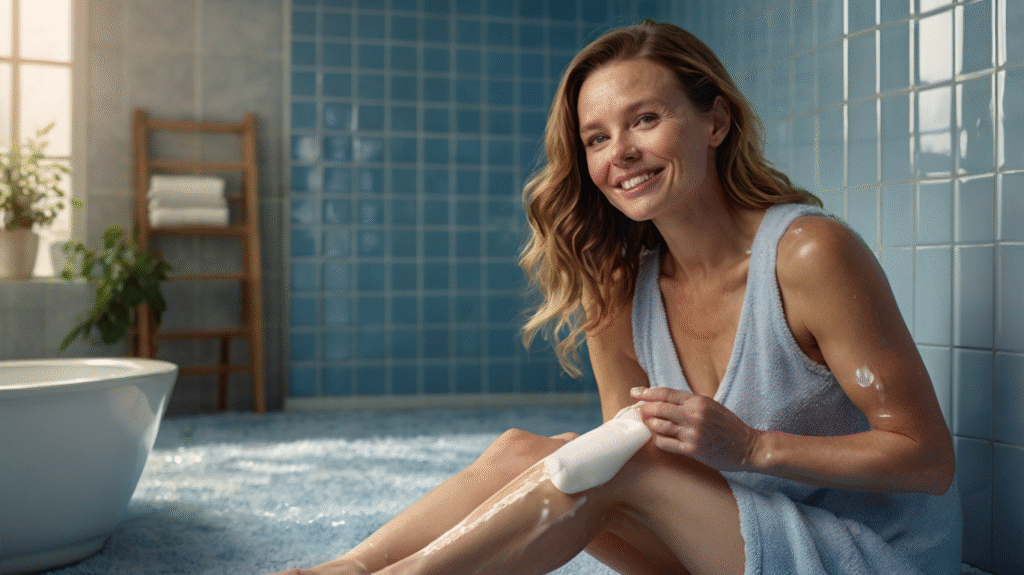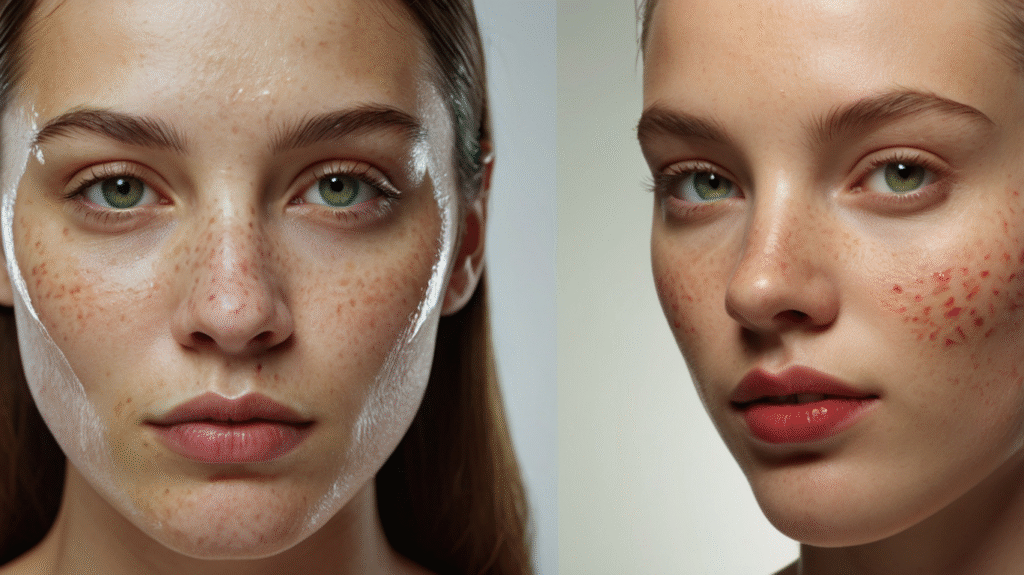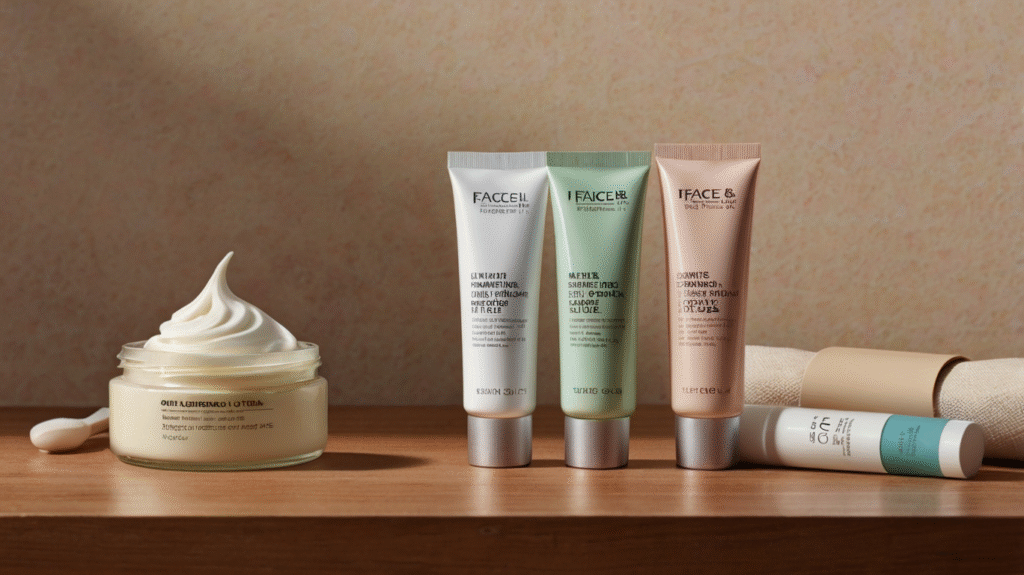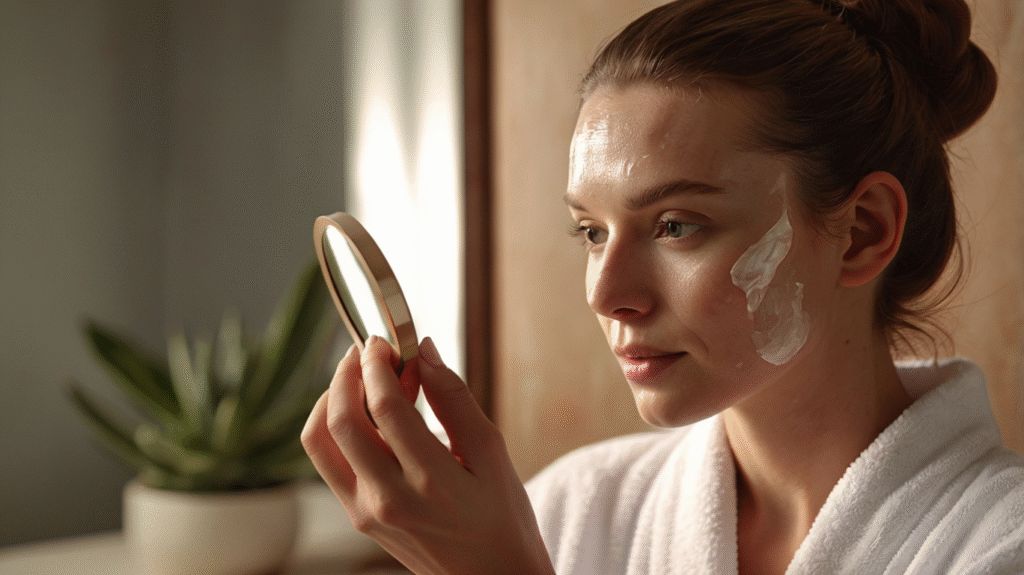Ever wondered whether that easy hair-removal cream in your bathroom is really safe for your face, arms, or even the sensitive bikini zone? You’re not alone. Millions are ditching razors and waxing kits and opting for these apparently kind creams. But beneath the smooth, silky promises lies a question it makes sense to investigate: are hair removal creams actually safe to use on all of your body?
Let’s reveal the reality behind the convenience, efficacy, and safety of hair removal creams—so you can make an intelligent decision for your skin and peace of mind.
What Are Hair Removal Creams and How Do They Work?
Hair removal creams, or depilatory creams, have chemicals that dissolve the protein structure of the hair. After weakening the structure of hair, it becomes a simple task to wipe it off, making the skin smooth.
Hair removal creams, unlike shaving, dissolve hair slightly below the skin. This process is generally longer-lasting and free of cuts or razor burn. On the other hand, its involved chemicals, such as calcium thioglycolate and potassium hydroxide, come with safety issues, particularly for sensitive areas.
Can You Use Hair Removal Creams on the Face?
The skin on your face is thinner and more sensitive than elsewhere. That means what is safe on your arms may not be safe on your upper lip or chin. Most companies market hair removal creams especially designed for the face with milder formulas and calming additions such as aloe vera or vitamin E.
Even so, performing a patch test is important. If you notice redness, itching, or burning, it’s better not to use it on the full face. In short, yes, you can apply hair removal creams to your face—but only if specially formulated for facial use.
Are Hair Removal Creams Safe for Arms?

Yes, arm hair removal creams are safe to use. The arm skin is less sensitive than on your face or bikini line, so it’s commonly used as the testing ground for new products.
Most creams are suited for bigger areas such as arms and legs. They act fast—usually in five to ten minutes—and provide smoother skin than shaving. Just be sure to read the instructions carefully. Keeping the cream on too long can lead to irritation or even chemical burns.
To be on the safe side, do a patch test on a small region of your arm before making a full commitment. Apply a moisturizing lotion afterward to keep the skin soft and not dry.
What About the Bikini Area? Use Caution:
Now here’s where things get tricky. The bikini area is one of the most sensitive parts of your body. Using hair removal creams here can be risky if you’re not cautious. While some products are labeled “bikini-safe,” they still contain potent chemicals that can cause stinging, burning, or allergic reactions.
The secret is to stay away from internal or sensitive areas. Simply apply the cream to the outer bikini line, but keep it a distance from mucous membranes. Always use a product designed for this area, and once more—patch testing is not an option.
A lot of women use hair removal creams as a pain-free substitute for waxing in this region, but never at the cost of safety.
What Are the Advantages and Disadvantages of Using Hair-Removing Creams?

Advantages:
- Easy and fast to apply
- Inexpensive and easily found
- Lasts longer than shaving
Disadvantages:
- Possible skin irritation or chemical burns
- Overpowering scent from active ingredients
- Not for all, particularly those with sensitive skin
- Temporary effect—hair reappears within days
Although convenient, hair-removing creams are not a universal remedy. It is important to know your skin type and the formulation of the product.
Selecting the Proper Hair Removal Cream for Every Area:

To ensure maximum safety and effectiveness, select the proper product for the task:
For the face: Opt for creams that are “gentle” or “for facial use.” Seek calming ingredients such as chamomile.
For arms: Standard hair removal creams are okay unless you have very sensitive skin.
For the bikini area: Use only products that are “bikini-safe.” Stay away from internal areas and rinse well.
Reading the packaging isn’t optional—it’s required. Always heed the timing directions and never go longer than recommended.
Sensitive Skin? Here's What You Need to Know:

If you have eczema, psoriasis, or simply sensitive skin, go slow. Most depilatories contain fragrances and preservatives that can aggravate damaged skin. Use fragrance-free or dermatologist-tested varieties, and don’t apply the cream more than once a week.
Also, moisturize well after application. A soothing lotion can help calm the skin and lock in hydration, reducing the chance of post-use irritation.
Alternatives to Hair Removal Creams:
If you’ve had bad reactions to hair removal creams or simply want a more natural route, consider these alternatives:
- Shaving: Quick, but may lead to razor burn or ingrown hairs.
- Waxing: Longer-lasting, but painful and not always suitable for sensitive areas.
- Laser hair removal: Lasting effects, but costly.
- Sugaring: A gentler version of waxing with natural products.
All methods have their advantages and disadvantages, but for the convenience-minded, hair removal creams are still a top contender—with the proper precautions.
Post-Removal Care: Don't Skip This Step
Most people forget about aftercare, but it is very much a necessity for your skin. When you’ve wiped the hair removal cream away, wash the area thoroughly with cold water and dry gently. Use an unscented moisturizer to calm the skin and keep it from getting dry.
Steer clear of the sun, tight-fitting clothing, and strong soaps for a minimum of 24 hours after using it. These are small steps, but they go a long way toward keeping your skin irritation-free.
When to Steer Clear of Hair Removal Creams Entirely:
There are certain circumstances under which using hair removal creams simply isn’t worth the gamble. If you have
Open sores or wounds
- Sunburned skin
- Active acne (particularly on the face)
- A history of sensitivities to skincare products
Pass on the gentleness. Your skin’s well-being always takes precedence.
Final Thoughts: Is It Worth the Risk?
Hair removal creams offer a fast, painless alternative to traditional hair removal methods—but they come with precautions. Not all creams are created equal, and not all skin types respond the same way. If you’re thoughtful about product choice, application, and aftercare, they can be a convenient addition to your beauty routine.
Remember: your skin is talking. Listen to it. A little extra time to be careful today can save you days of pain tomorrow.
FAQs:
No. Every area is of varying sensitivity. Always use a product that is specifically formulated for the area you intend to use it on.
Most brands advise waiting at least 72 hours before a second application. Overuse can cause damage to the skin.
They are less likely to create ingrown hairs than shaving. But still, good aftercare is necessary to avoid them.
A few brands market “natural” versions containing plant derivatives, but others should be patch-tested even for these.
Rinse the area right away with cool water and avoid scrubbing; apply a calming cream and then see a dermatologist if it continues.